Live, right now, the Holy Father is on the boat in Sydney harbour.



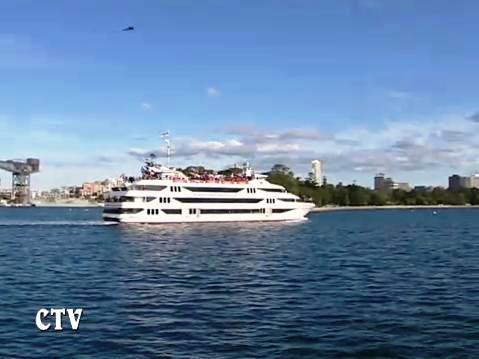
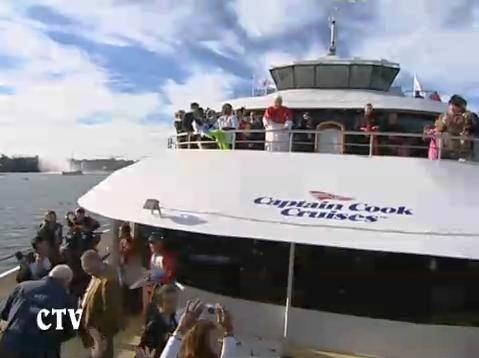
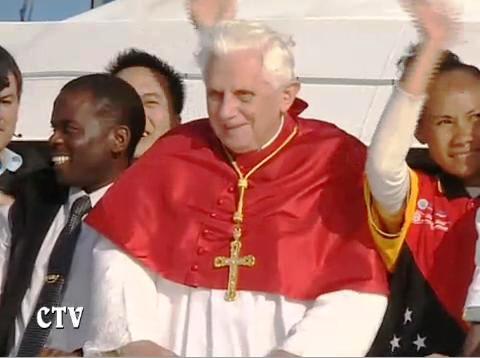
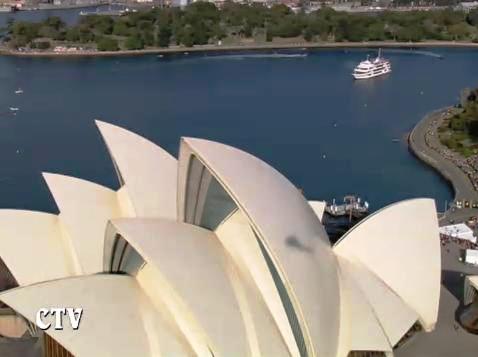
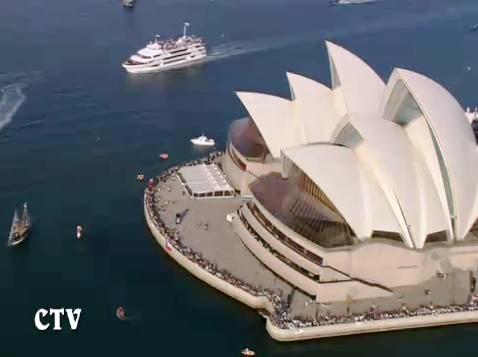
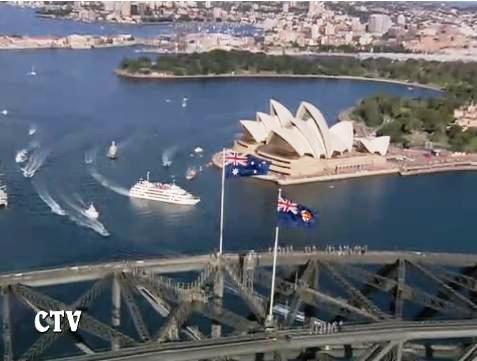
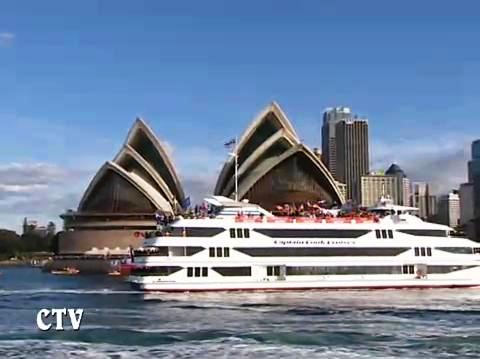
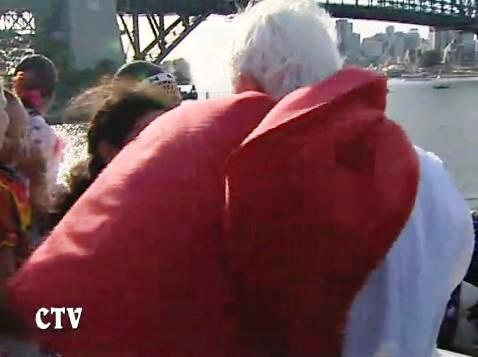
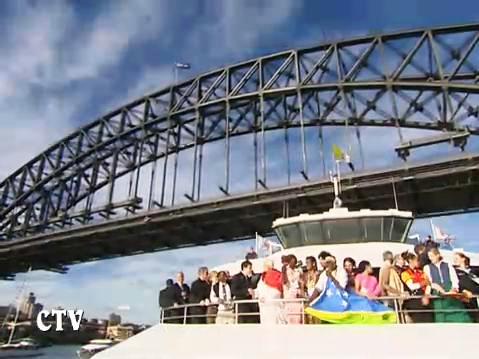
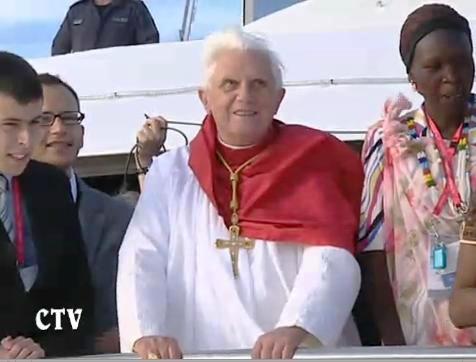
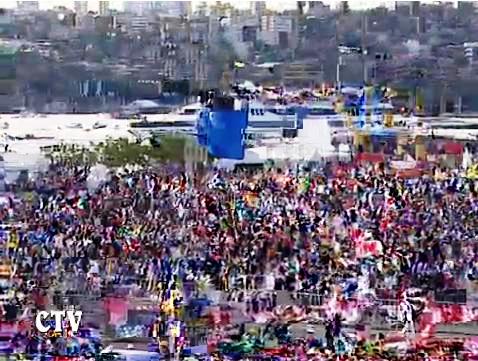


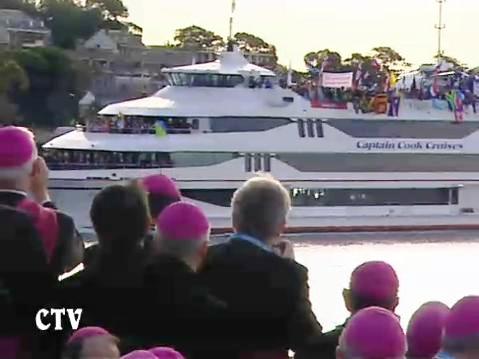

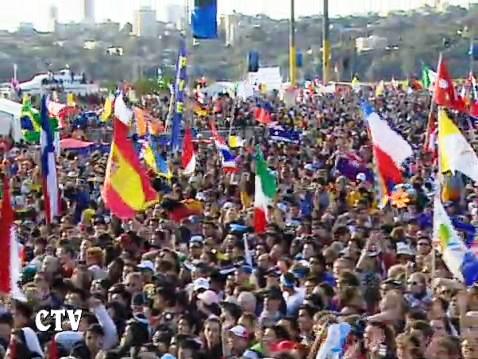

I have been updating this live… but it is nearly time to get some sleep!
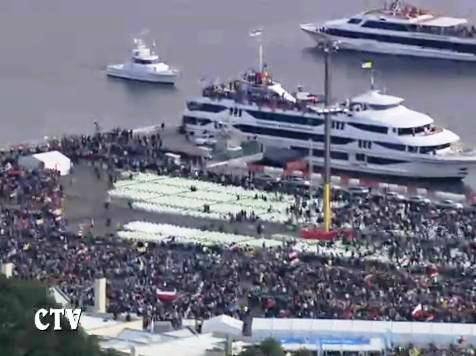

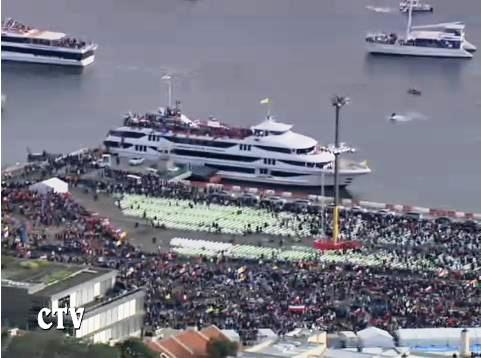
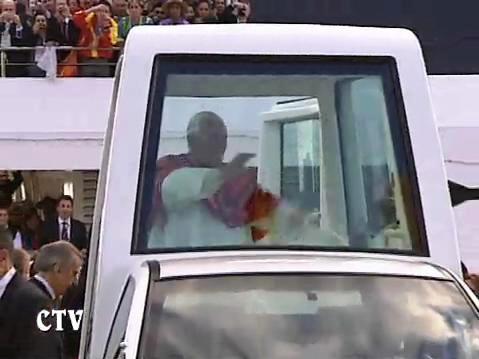


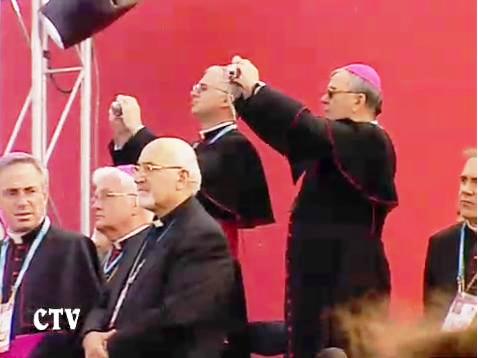
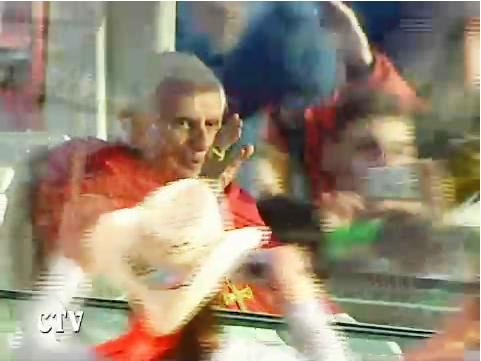

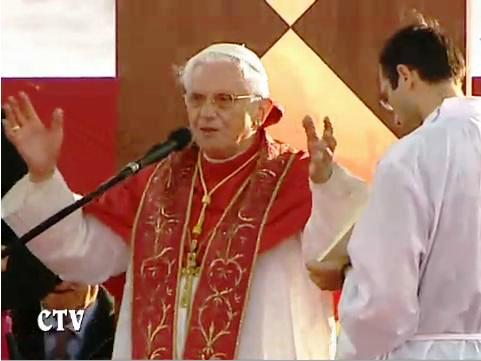
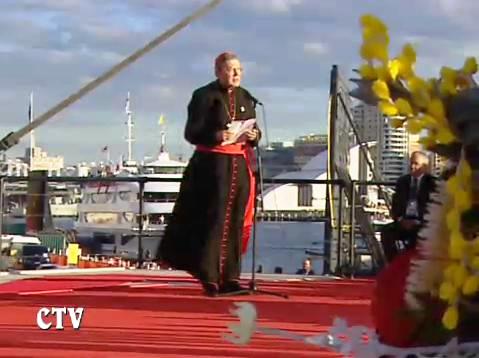
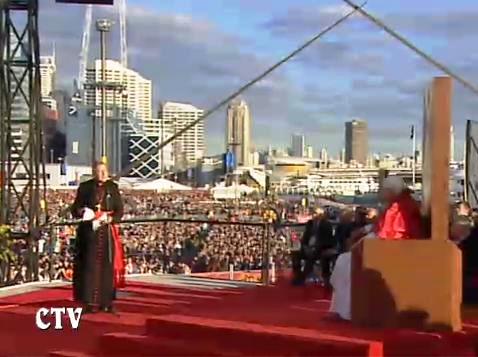
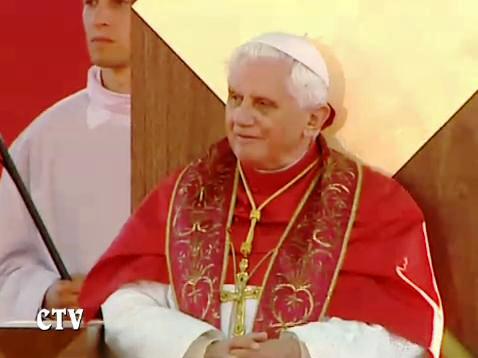
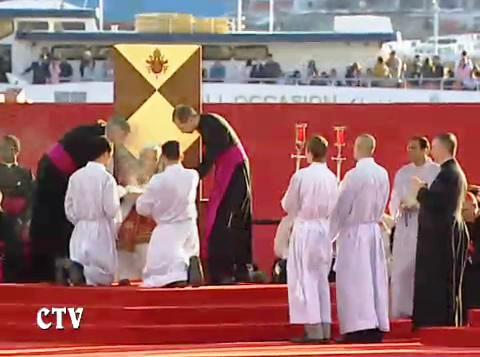
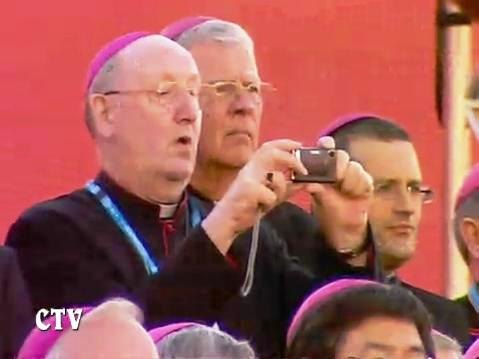
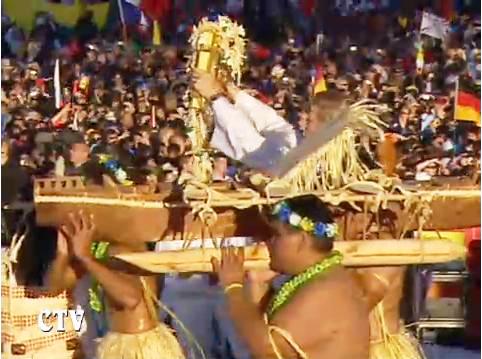
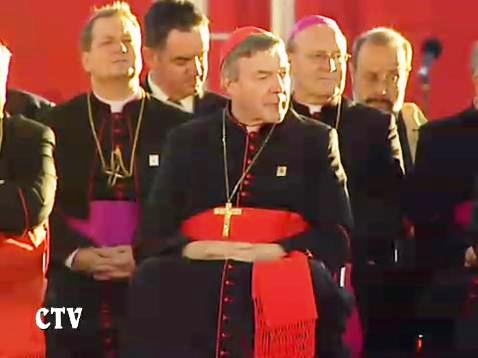
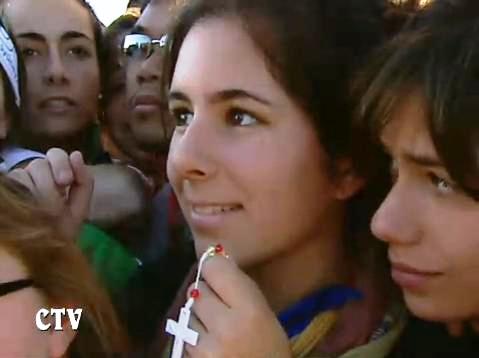
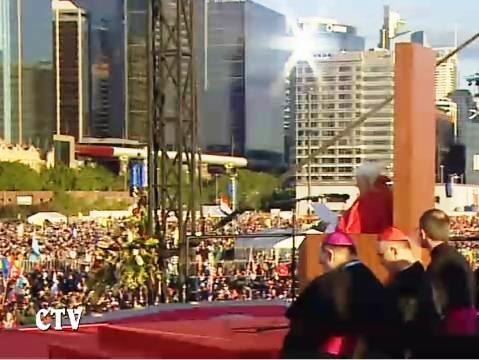

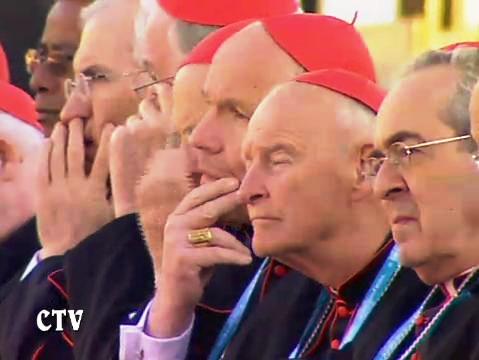
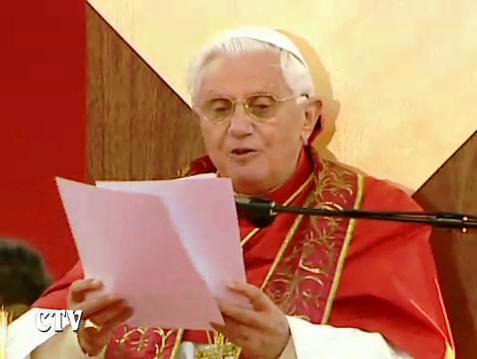

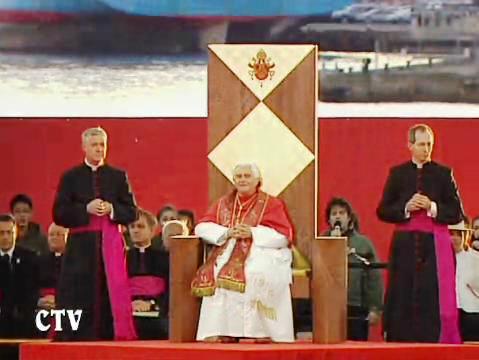
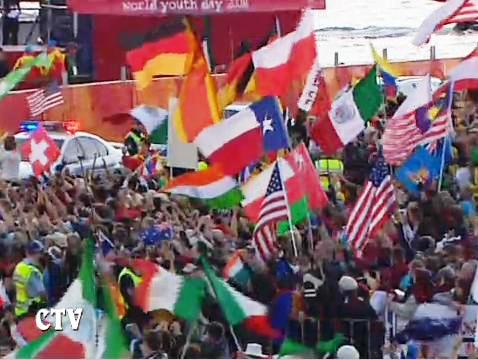

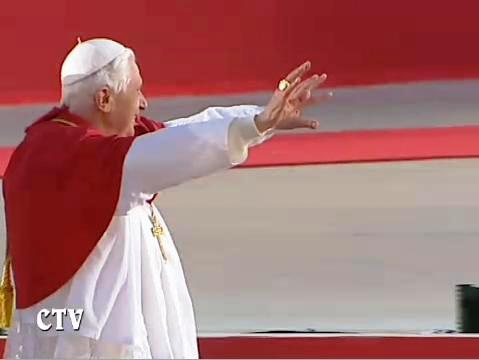
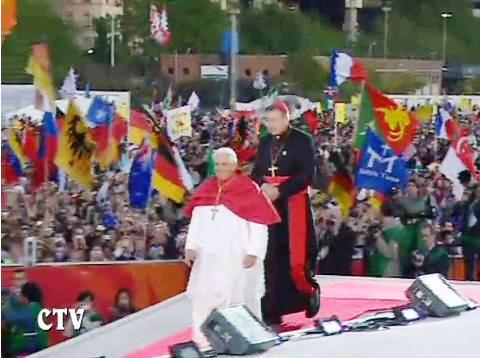

Dear Young People,
What a delight it is to greet you here at Barangaroo, on the shores of the magnificent Sydney harbour, with its famous bridge and Opera House. Many of you are local, from the outback or the dynamic multicultural communities of Australian cities. Others of you have come from the scattered islands of Oceania, and others still from Asia, the Middle East, Africa and the Americas. Some of you, indeed, have come from as far as I have, Europe! Wherever we are from, we are here at last in Sydney. And together we stand in our world as God’s family, disciples of Christ, empowered by his Spirit to be witnesses of his love and truth for everyone!
I wish firstly to thank the Aboriginal Elders who welcomed me prior to my boarding the boat at Rose Bay. I am deeply moved to stand on your land, knowing the suffering and injustices it has borne, but aware too of the healing and hope that are now at work, rightly bringing pride to all Australian citizens. To the young indigenous – Aboriginal and Torres Strait Islanders – and the Tokelauans, I express my thanks for your stirring welcome. Through you, I send heartfelt greetings to your peoples.
Cardinal Pell and Archbishop Wilson, I thank you for your warm words of welcome. I know that your sentiments resonate in the hearts of the young gathered here this evening, and so I thank you all. Standing before me I see a vibrant image of the universal Church. The variety of nations and cultures from which you hail shows that indeed Christ’s Good News is for everyone; it has reached the ends of the earth. Yet I know too that a good number of you are still seeking a spiritual homeland. Some of you, most welcome among us, are not Catholic or Christian. Others of you perhaps hover at the edge of parish and Church life. To you I wish to offer encouragement: step forward into Christ’s loving embrace; recognize the Church as your home. No one need remain on the outside, for from the day of Pentecost the Church has been one and universal.
This evening I wish also to include those who are not present among us. I am thinking especially of the sick or mentally ill, young people in prison, those struggling on the margins of our societies, and those who for whatever reason feel alienated from the Church. To them I say: Jesus is close to you! Feel his healing embrace, his compassion and mercy!
Almost two thousand years ago, the Apostles, gathered in the upper room together with Mary and some faithful women, were filled with the Holy Spirit (cf. Acts 1:14; 2:4). At that extraordinary moment, which gave birth to the Church, the confusion and fear that had gripped Christ’s disciples were transformed into a vigorous conviction and sense of purpose. They felt impelled to speak of their encounter with the risen Jesus whom they had come to call affectionately, the Lord. In many ways, the Apostles were ordinary. None could claim to be the perfect disciple. They failed to recognize Christ (cf. Lk 24:13-32), felt ashamed of their own ambition (cf. Lk 22:24-27), and had even denied him (cf. Lk 22:54-62). Yet, when empowered by the Holy Spirit, they were transfixed by the truth of Christ’s Gospel and inspired to proclaim it fearlessly. Emboldened, they exclaimed: repent, be baptized, receive the Holy Spirit (cf. Acts 2:37-38)! Grounded in the Apostles’ teaching, in fellowship, and in the breaking of the bread and prayer (cf. Acts 2:42), the young Christian community moved forward to oppose the perversity in the culture around them (cf. Acts 2:40), to care for one another (cf. Acts 2:44-47), to defend their belief in Jesus in the face of hostility (cf Acts 4:33), and to heal the sick (cf. Acts 5:12-16). And in obedience to Christ’s own command, they set forth, bearing witness to the greatest story ever: that God has become one of us, that the divine has entered human history in order to transform it, and that we are called to immerse ourselves in Christ’s saving love which triumphs over evil and death. Saint Paul, in his famous speech to the Areopagus, introduced the message in this way: "God gives everything – including life and breath – to everyone … so that all nations might seek God and, by feeling their way towards him, succeed in finding him. In fact he is not far from any of us, since it is in him that we live and move and have our being" (Acts 17: 25-28).
And ever since, men and women have set out to tell the same story, witnessing to Christ’s truth and love, and contributing to the Church’s mission. Today, we think of those pioneering Priests, Sisters and Brothers who came to these shores, and to other parts of the Pacific, from Ireland, France, Britain and elsewhere in Europe. The great majority were young – some still in their late teens – and when they bade farewell to their parents, brothers and sisters, and friends, they knew they were unlikely ever to return home. Their whole lives were a selfless Christian witness. They became the humble but tenacious builders of so much of the social and spiritual heritage which still today brings goodness, compassion and purpose to these nations. And they went on to inspire another generation. We think immediately of the faith which sustained Blessed Mary MacKillop in her sheer determination to educate especially the poor, and Blessed Peter To Rot in his steadfast resolution that community leadership must always include the Gospel. Think also of your own grandparents and parents, your first teachers in faith. They too have made countless sacrifices of time and energy, out of love for you. Supported by your parish priests and teachers, they have the task, not always easy but greatly satisfying, of guiding you towards all that is good and true, through their own witness – their teaching and living of our Christian faith.
Today, it is my turn. For some of us, it might seem like we have come to the end of the world! For people of your age, however, any flight is an exciting prospect. But for me, this one was somewhat daunting! Yet the views afforded of our planet from the air were truly wondrous. The sparkle of the Mediterranean, the grandeur of the north African desert, the lushness of Asia’s forestation, the vastness of the Pacific Ocean, the horizon upon which the sun rose and set, and the majestic splendour of Australia’s natural beauty which I have been able to enjoy these last couple of days; these all evoke a profound sense of awe. It is as though one catches glimpses of the Genesis creation story – light and darkness, the sun and the moon, the waters, the earth, and living creatures; all of which are "good" in God’s eyes (cf. Gen 1:1 – 2:4). Immersed in such beauty, who could not echo the words of the Psalmist in praise of the Creator: "how majestic is your name in all the earth?" (Ps 8:1).
And there is more – something hardly perceivable from the sky – men and women, made in nothing less than God’s own image and likeness (cf. Gen 1:26). At the heart of the marvel of creation are you and I, the human family "crowned with glory and honour" (Ps 8:5). How astounding! With the Psalmist we whisper: "what is man that you are mindful of him?" (Ps 8:4). And drawn into silence, into a spirit of thanksgiving, into the power of holiness, we ponder.
What do we discover? Perhaps reluctantly we come to acknowledge that there are also scars which mark the surface of our earth: erosion, deforestation, the squandering of the world’s mineral and ocean resources in order to fuel an insatiable consumption. Some of you come from island nations whose very existence is threatened by rising water levels; others from nations suffering the effects of devastating drought. God’s wondrous creation is sometimes experienced as almost hostile to its stewards, even something dangerous. How can what is "good" appear so threatening?
And there is more. What of man, the apex of God’s creation? Every day we encounter the genius of human achievement. From advances in medical sciences and the wise application of technology, to the creativity reflected in the arts, the quality and enjoyment of people’s lives in many ways are steadily rising. Among yourselves there is a readiness to take up the plentiful opportunities offered to you. Some of you excel in studies, sport, music, or dance and drama, others of you have a keen sense of social justice and ethics, and many of you take up service and voluntary work. All of us, young and old, have those moments when the innate goodness of the human person – perhaps glimpsed in the gesture of a little child or an adult’s readiness to forgive – fills us with profound joy and gratitude.
Yet such moments do not last. So again, we ponder. And we discover that not only the natural but also the social environment – the habitat we fashion for ourselves – has its scars; wounds indicating that something is amiss. Here too, in our personal lives and in our communities, we can encounter a hostility, something dangerous; a poison which threatens to corrode what is good, reshape who we are, and distort the purpose for which we have been created. Examples abound, as you yourselves know. Among the more prevalent are alcohol and drug abuse, and the exaltation of violence and sexual degradation, often presented through television and the internet as entertainment. I ask myself, could anyone standing face to face with people who actually do suffer violence and sexual exploitation "explain" that these tragedies, portrayed in virtual form, are considered merely "entertainment"?
There is also something sinister which stems from the fact that freedom and tolerance are so often separated from truth. This is fuelled by the notion, widely held today, that there are no absolute truths to guide our lives. Relativism, by indiscriminately giving value to practically everything, has made "experience" all-important. Yet, experiences, detached from any consideration of what is good or true, can lead, not to genuine freedom, but to moral or intellectual confusion, to a lowering of standards, to a loss of self-respect, and even to despair.
Dear friends, life is not governed by chance; it is not random. Your very existence has been willed by God, blessed and given a purpose (cf. Gen 1:28)! Life is not just a succession of events or experiences, helpful though many of them are. It is a search for the true, the good and the beautiful. It is to this end that we make our choices; it is for this that we exercise our freedom; it is in this – in truth, in goodness, and in beauty – that we find happiness and joy. Do not be fooled by those who see you as just another consumer in a market of undifferentiated possibilities, where choice itself becomes the good, novelty usurps beauty, and subjective experience displaces truth.
Christ offers more! Indeed he offers everything! Only he who is the Truth can be the Way and hence also the Life. Thus the "way" which the Apostles brought to the ends of the earth is life in Christ. This is the life of the Church. And the entrance to this life, to the Christian way, is Baptism.
This evening I wish therefore to recall briefly something of our understanding of Baptism before tomorrow considering the Holy Spirit. On the day of your Baptism, God drew you into his holiness (cf. 2 Pet 1:4). You were adopted as a son or daughter of the Father. You were incorporated into Christ. You were made a dwelling place of his Spirit (cf. 1 Cor 6:19). Baptism is neither an achievement, nor a reward. It is a grace; it is God’s work. Indeed, towards the conclusion of your Baptism, the priest turned to your parents and those gathered and, calling you by your name said: "you have become a new creation" (Rite of Baptism, 99).
Dear friends, in your homes, schools and universities, in your places of work and recreation, remember that you are a new creation! Not only do you stand before the Creator in awe, rejoicing at his works, you also realize that the sure foundation of humanity’s solidarity lies in the common origin of every person, the high-point of God’s creative design for the world. As Christians you stand in this world knowing that God has a human face – Jesus Christ – the "way" who satisfies all human yearning, and the "life" to which we are called to bear witness, walking always in his light (cf. ibid., 100).
The task of witness is not easy. There are many today who claim that God should be left on the sidelines, and that religion and faith, while fine for individuals, should either be excluded from the public forum altogether or included only in the pursuit of limited pragmatic goals. This secularist vision seeks to explain human life and shape society with little or no reference to the Creator. It presents itself as neutral, impartial and inclusive of everyone. But in reality, like every ideology, secularism imposes a world-view. If God is irrelevant to public life, then society will be shaped in a godless image, and debate and policy concerning the public good will be driven more by consequences than by principles grounded in truth.
Yet experience shows that turning our back on the Creator’s plan provokes a disorder which has inevitable repercussions on the rest of the created order (cf. 1990 World Day of Peace Message, 5). When God is eclipsed, our ability to recognize the natural order, purpose, and the "good" begins to wane. What was ostensibly promoted as human ingenuity soon manifests itself as folly, greed and selfish exploitation. And so we have become more and more aware of our need for humility before the delicate complexity of God’s world.
But what of our social environment? Are we equally alert to the signs of turning our back on the moral structure with which God has endowed humanity (cf. 2007 World Day of Peace Message, 8)? Do we recognize that the innate dignity of every individual rests on his or her deepest identity – as image of the Creator – and therefore that human rights are universal, based on the natural law, and not something dependent upon negotiation or patronage, let alone compromise? And so we are led to reflect on what place the poor and the elderly, immigrants and the voiceless, have in our societies. How can it be that domestic violence torments so many mothers and children? How can it be that the most wondrous and sacred human space – the womb – has become a place of unutterable violence?
My dear friends, God’s creation is one and it is good. The concerns for non-violence, sustainable development, justice and peace, and care for our environment are of vital importance for humanity. They cannot, however, be understood apart from a profound reflection upon the innate dignity of every human life from conception to natural death: a dignity conferred by God himself and thus inviolable. Our world has grown weary of greed, exploitation and division, of the tedium of false idols and piecemeal responses, and the pain of false promises. Our hearts and minds are yearning for a vision of life where love endures, where gifts are shared, where unity is built, where freedom finds meaning in truth, and where identity is found in respectful communion. This is the work of the Holy Spirit! This is the hope held out by the Gospel of Jesus Christ. It is to bear witness to this reality that you were created anew at Baptism and strengthened through the gifts of the Spirit at Confirmation. Let this be the message that you bring from Sydney to the world!
Mi rivolgo ora con affetto ai giovani di lingua italiana. Cari amici, anche questa volta avete risposto numerosi al mio invito, nonostante le difficoltà dovute alla distanza. Vi ringrazio, e voglio salutare anche i vostri coetanei che dall’Italia sono spiritualmente uniti a noi. Vi invito a vivere con grande impegno interiore queste giornate: aprite il cuore al dono dello Spirito Santo, per essere rafforzati nella fede e nella capacità di rendere testimonianza al Signore risorto. Arrivederci!
Chers jeunes francophones, poussés par le désir d’approfondir votre foi, vous êtes venus des extrémités de la terre pour vivre à Sydney l’expérience unique et communautaire d’une rencontre privilégiée avec le Seigneur. C’est l’Esprit Saint qui vous a rassemblés ici. Puisse-t-Il vous permettre de expérimenter sa présence dans votre cœur et vous pousser à rendre témoignage avec ardeur de Jésus-Christ mort et ressuscité pour vous!
Liebe Freunde, die ihr mich in meiner Muttersprache versteht, von Herzen grüße ich euch alle. Erweist euch überall als freudige Zeugen der frohmachenden Botschaft Jesu! Sprecht mutig von eurem Glauben, auch wenn ihr zuweilen auf Widerspruch stößt und das Kreuz der Ablehnung erfährt. Der Herr, der für uns ein größeres Kreuz getragen hat, wird euch beistehen. Gott schenke euch eine gute, gesegnete Zeit hier in Australien.
Queridos jóvenes de lengua española, la misión de ser testigos del Señor en todos los lugares de la tierra es una apasionante tarea, que exige acoger su Palabra e identificarse con Él, compartiendo con los demás la alegría de haber encontrado al verdadero amigo que nunca defrauda. Que este reto agrande vuestra generosidad. Un saludo muy cordial a todos.
Queridos amigos dos vários países de língua oficial portuguesa, bem-vindos a Sidney! A todos saúdo com afecto: os de perto e os de longe. Lá, na vossa Pátria, tereis ouvido Jesus segredar-vos: «Sereis minhas testemunhas… até aos confins do mundo» (Act 1, 8). A viagem mais ou menos longa que enfrentastes para chegar até aqui, à Austrália ou – de seu nome cristão completo – «Terra Austral do Espírito Santo», não deixou em vós a sensação de terdes chegado aos confins do mundo? Pois bem! É com grande alegria que o Papa vos acolhe para vos confirmar como testemunhas de Jesus, por Ele acreditadas com o dom do seu próprio Espírito.


































The guy on the jet ski must be a bad*ss. Thank goodness for EWTN, covering this…
Why an entrance by boat?
(Barque of Peter?)
Thanks for the pics. I know the one who helped to make the banner toward to the top of the series. Great!
Cheers!
Bit embarrassed about the near naked aboriginals clearing the evil spirits out of the way away for His Holiness ! good grief !
I wonder if the aboriginal communities of Australia will be thanking the Catholic Church for it’s contribution to this country ? Pigs might yet fly.
He’s a fit old man, thats for sure. God Bless him.
Do we think another WYD will take place? He’ll be 84-85 or the next one (God-Willing).
P.s. As an aussie I’m sorry about the pagan rituals but we’re a silly mob sometimes. But thats what happens when there isn’t a Mass on these shores for the first 50 years of our settlement.
Thank you for the super screen captures! I watched it live on EWTN – for which network, thank God! In England it was 5.30 am when coverage started – and I was watching!!
The Holy Father’s homily moved me to tears. In three years he has proved to be one of the holiest, most learned and most gentle popes in history, one who has the power to teach – and today’s homily was teachng at its best. As I watched this morning, from the embarkation on the cruise boat, to the landing and liturgy, I kept thinking about Joseph Ratzinger’s life, as a priest, theologian and great professor….and now the Lord has led him to this, his most important task. I love him and pray for him constantly.
For me, just the pictures make it obvious that this is a blessed event… despite the WYD-bashing that traditionalists often do.
I didn’t get up to watch the coverage. But just now, just reading the Holy Father’s speech, I was brought to tears again and again. It is such a gentle homily, especially when opposed to Cardinal Pell’s very muscular call to holiness. But it is not a weak speech. It is a shepherd calling to bruised and frightened sheep.
How mysterious it is, the way God really does use Peter to strengthen his brethren!
I notice that the multilingual greetings are, once again, not just repeats of what was said in the body of the speech. They are quite different, in fact.
Here’s the Spanish:
Dear youths of the Spanish tongue, the mission to be witnesses of the Lord in all the regions of the earth is an enthralling assignment that requires letting in His Word and identifying oneself with Him, sharing with others the happiness of having met the true friend that never betrays. May this challenge widen our generosity. A very cordial greeting to all.
These are some wonderful pictures! Thanks for the post and for keeping us up on what is happening down under!
I’m sure that the WYD committee can provide wonderful explanations for the half-naked aboriginal “witches” that simply looked like demons themselves (you can see pictures of them on other blogs), that flanked the Holy Father for quite a while. Pardon my ignorance and cultural insensitivity. My mind is transported to the limpia which John Paul II suffered at the hands of Aztec witches at the behest of Piero Marini. One is tempted to wonder out loud about this selection of imagery: the foremost spiritual leader of the Christian world being subjected to a pagan ritual, yet AGAIN – WHY?? I don’t even think most Australians, as possessed by pop-culture as we are here in the USA, have any clue what this was about. One can understand a native dance as part of a cultural experience OUTSIDE of the Liturgy, but this is really regrettable
TJB – There are hundreds of traditionalists who are registered WYD pilgrims and participants themselves, surely you’ve heard of Juventutem – I’m a traditionalist myself and a veteran pilgrim of two past WYD’s – they were in large part wonderful experiences, but there is always room for constructive criticism.
This seems to be yet another indication that ‘inculturation’ is another word for relativising things like modesty, solemnity and respect. So, in that culture it’s great to dance around half naked…of course, on the other hand it is in no way informed by Christian sensibilities nor respect for the dignity of the Vicar of Christ. How has the true religion of Christ improved upon such culture? Evidently in no visible way, unless we are to accept that native pagan practices are per se good, as certain liturgists and theologians in the Vatican assuredly do. Which accounts, in part, for why pagan practices could ever occur even remotely near Church property, with the Church’s permission, at Assisi, or how it’s acceptable to inject pagan dance rituals into Mass, etc. In case no one knows this, Europe also had its share of half naked, pagan dancers 2000 years ago. Funny that such elements weren’t incorporated into Masses of the time-they were instead condemned for the decadance that they were representing. It is all very annoying, and it is things like this that cause people to lose hope that the the CHRISTIAN sensibility and culture of the Church will again permeate EVERYTHING she and her ministers perform. God Bless the Holy Father and assist him to resist anything which degrades or detracts from the transmission of grace and the message of Christ.
God bless our Holy Father! What a wonderful speech! It should be required reading for all Catholic teens!
One thing that gets me though is the media coverage. They are trying to make the Holy Father into some radical environmentalist. They fail to grasp his true message:
“My dear friends, God’s creation is one and it is good. The concerns for non-violence, sustainable development, justice and peace, and care for our environment are of vital importance for humanity. They cannot, however, be understood apart from a profound reflection upon the innate dignity of every human life from conception to natural death: a dignity conferred by God himself and thus inviolable.“
Does anybody ever notice that it’s always windy where ever the Pope goes? It’s like the Holy Spirit is blowing out the smoke of Satan with a breath of fresh air (Pope Benedict XVI).
Just looking at the photos of our Holy Father…does anyone doubt that this is a man
who loves his flock?
We are SOOOOOO blessed. Truly.
Hello Traditionalists,
As a priest who came from Pacific island, instead bashing the aboriginals and the natives who wear their customs, why don’t you bash the liberals and secularists. These people are innocent in the war between the heretics and orthodox of the West. They are welcoming the Pope in their cultural and not religious traditions. They don’t worship pagan gods but the God of our Lord Jesus Christ. They don’t show this at the Liturgy of the Mass but at the Prayer service. They don’t do these welcoming ceremony every Sunday Mass. If you are so rigid in evangelizing and try to eradicate their heritage and cultures in the name of Christianity, the say goodbye.
At first, I wondered why the Pope was wearing a winter mozzetta. Then it struck
me: in the southern hemisphere, it is winter.
Father Gary – with all due respect, we are entitled I think to express our opinions if done with civility, even if you disagree with them. I don’t think anyone has spoken against the dignity of these people, if my comments were understood this way I sincerely apologize. If this ritual intended to cleanse the Pope or his path of evil spirits, I see this as having more than mere cultural overtones. What relevance does it have (dress included, or lack thereof) in the context of welcoming the Vicar of Christ? Is it fair or not simply to ask if this was the most appropriate way? There used to be GREAT care and concern for the person of the Pope and how a Catholic, aboriginal or not, was to dress and act in his presence. There was indeed dancing during the WYD Opening Mass, and I would hope that the Holy Father is spared from any further excesses of inculturation. I would love to know how the Pope himself felt about it all. I suppose we could just read from his writings as cardinal concerning inculturation to get an idea.
I watched this live as well. I thought it was wonderful. And His Holiness seemed to be beeming during the native performance. WYD is a great blessing for the Church. Who could imagine in today’s secular world, so many young people travelling so far for Christ and His Vicar? Deo gratias!
P.S. His Eminence George Cardinal Pell used the phrase “Pope John Paul the Great”! ;-)
I don’t like to see any native liturgical dancing either DURING the Liturgy of the Mass but I don’t mind if they want to show their native dance, custom BEFORE or AFTER the Mass in the presence of the Holy Father. I don’t think it’s right to tell these people especially in their our native land that you can’t see or greet the Pope if you are not wearing a western clothes. We cannot be narrow minded because we are from the West and have superior mindset than people in Africa, Asia, Pacific and Latin America. Look what the liberal Anglican/Episcopalians in the West did to their brethren in the developing countries, they say “get with it, someday you’ll catch up.”
The Pope’s address was stunningly beautiful. References to Aborigines as witches, demons and pagans are not.
The ceremony is called a Welcome To Country and has become a standard ritual to mark the beginning of official or significant public events. It acknowledges that Aborigines were the original custodians of the land. Not everyone in Australia is happy about the soft apartheid that seems to be implicit in this new convention. (One such ceremony also marked the opening of the new Parliament in Canberra earlier this year – for the first time ever).
Nevertheless, it wasn’t part of a Mass but was more in the realm of a civic-cultural reception preparatory to what followed. Some of the comments above strike me as being somewhat over the top.
Were the Pope’s advisers – principally Cardinal Pell during this visit – were they to banish the tribal elders and performers connected to this harbourside land, it would have given tremendous offence and humiliated many Aboriginal Catholics. The Church’s writ does not extend to sacralising every civic and cultural convention operative in Australia, sad though that may be to relate.
Judging solely by these pictures, it appears the Aboriginal rituals, whatever they are — I am in no position to determine what, if any, spiritual or religious meaning they have, and therefore if they are at odds with Christianity — were not offered in the context of the Mass.
Apart from the question of whether to do them, with the pope, at all (which can only be judged in relation to what their meaning is, and I don’t know that, I really question that many here really know that), I note that they’ve been left out of Mass–that is a notable change from past practice, is it not?
Also, if we’re going to talk about modesty and dignity, and perhaps find these rituals and gestures wanting, perhaps someone will cite authoritative, universal teaching on this subject that is on-point. I know what is immodest in a western setting; I don’t know beans about the Aboriginal culture of Australia.
The Pope’s address was stunningly beautiful. References to Aborigines as witches, demons and pagans are not.
The ceremony is called a Welcome To Country and has become a standard ritual to mark the beginning of official or significant public events. It acknowledges that Aborigines were the original custodians of the land. Not everyone in Australia is happy about the soft apartheid that seems to be implicit in this new convention. (One such ceremony also marked the opening of the new Parliament in Canberra earlier this year – for the first time ever).
Nevertheless, it wasn’t part of a Mass but was more in the realm of a civic-cultural reception preparatory to what followed. Some of the comments above strike me as being somewhat over the top.
Were the Pope’s advisers – principally Cardinal Pell during this visit – were they to banish the tribal elders and performers connected to this harbourside land, it would have given tremendous offence and humiliated many Aboriginal Catholics. The Church’s writ does not extend to sacralising every civic and cultural convention operative in Australia, sad though that may be to relate.
First comment here. Love your work, Father.
Adios.
Fr. Fox,
Rather than engage in a debate in this combox on the proposterous notion that, in an urban setting, Aboriginals have a different standard for modesty than everyone else, I would simply note that large parts of Church teaching on this type of subject is basic principles, elaborated by approved and good moral theologians. Not being a moral theologian, I can only state that CLEARLY whatever standard of modesty applies to the white skinned people in Sydney applied to the darker skinned folks to…unless we are to assume that they are incapable of observing “white” morality? One is also mindful that in a papal Mass 20 years ago, there was a bare-breasted New guinea woman (who actually was American, but New Guinean by descent) who apparently read the Epistle at Mass, or at least participated in a public, meaningful way. One does not need authoratative, universal teaching cited to know that such a things was wrong and immodest.
Tobias:
Winter mozzetta? He is wearing the summer one. I myself asked, why is he not wearing the winter one instead, since in Australia it is winter?
My 2 cents worth:
1. The aboriginal dancers were being traditional without being immodest. Good example of gravitational pull of Western culture on aboriginal culture…haha.
2. The Holy Father’s speech was A plus plus. Please concentrate on it rather than bare-chestedness.
The whole thing has been BEAUTIFUL …
Rose, so everything that is traditional is by definition modest? THat seems to be the implication of your comment. No one is saying that this is necessarily rising to some kind of grave scandal or sin (unlike some other events under other liturgists). It is merely incongruous with a Catholic event, and very clearly is not exhibiting the concept of modesty of dress that recognizes that when exposing skin will be DISTRACTING and/or possibly lead to either emulation or excess focusing on exposed parts, there is a problem. If those were white men, you wouldn’t have made the comment I’m quite sure, so I would ask the question whether there is a different standard if you are dark skinned (regardless of your culturral background) when the event is urban and in the context of a religious service (even if not a Mass).
As much as I dislike all those showmanship that goes on at these events where ever the Holy Father goes I think we should be focused on what the Holy Father did and not what the sideshow consisted of.
its like watching St. john Bosco’s visions became an actualization.
A note on modesty v. immodesty, for those who are discussing it:
It is not solely (or even primarily) what one is wearing that makes for modesty. It is the whole comportment of oneself which does the job. You can go to the Holy Land, for example, and see the vast majority of Jewish and Muslim women completely covered from head to toe — dressed for all intents and purposes like nuns — but know immediately by the way some of them move, stand, glance, and interact that they are NOT nuns. One can be completely covered up and still leave little to the imagination. OTOH, you can go to your local beach and find ladies in swimsuits who are comporting themselves in a very modest way; they are moving, standing, glancing, and interacting in such a way that does not invite their audience to impure thoughts.
Yes, modesty includes manner of dress. But dress standards are in some respects cultural and only secondary to the standards of personal comportment.
(This has nothing to do with whether the Aboriginal ceremonies were appropriate, of course. I just wanted to point out that not all modesty is measured in skin and fabric.)
What vision of St. John Bosco would that be, Carolina?
JRBROWN – I think what Rose was saying (and Rose, please correct me if I am mistaken) is that the aboriginal dancers were being traditional to their own ways without being immodest (i.e. completely nude, save body paint). I don’t think she was using a catch-all “traditional”.
Quantative Metathesis – I agree entirely with your comment. I will go one futher: some of the most modest people I have ever met were the Dinka in Sudan, and they were completely nude most of the time. They were far from immodest, meaning their behavior was very strict and regimented. The irony is that the Mohammedan usurpers who attempted to take their land and enslave them claimed they were teaching them “modesty” to protect them. Yet rape among that culture was virtually unknown (the penalties are death), and it was the Mohammedans dressed in camouflage or in long djelb a robes who began to rape the Southern women (as they now do the women of Darfur) any chance they got.
So, modesty is a state of mind. If those Sudanese women lived in a society where expsing their bodily parts would be an occasion to sin, they would have no doubt covered up. But in their culture that was simply not the case.
Deusdonat: modesty is not a state of mind. I have no idea from whence your concept originates, but modesty has an OBJECTIVE as well as subjective content. Lest we forget, the idea of modesty to protect against sins against the 6th and 9th Commandments comes from Genesis itself, remember? They saw their own nakedness and “were ashamed”. Why? Precisely because Adam and Eve realized that, with original sin, came concupiscence and movements of the flesh and mind which were out of their control. This is basic stuff-there are reasons why humans wear clothes in Christian and Jewish culture (as well as Islamic)-we all recognize the validity of Genesis and God’s revelation about what sin has done to our original constitutions.
Quant M.: modesty is subjective and objective, as noted above. So certain fashions today would be mortally sinful at some time periods in the past, whereas today they might be slightly venial-this is not a judgment on the past or present, just the reality. If these Aboriginals wore that clothing on a typical beach, they would be quite modest, actually. Or perhaps in their native environment, it wold be reasonably acceptable, though it should be understood that the line between subjective and objective (i.e., incitement to sin which is common to all humans) is a fine one. Also, most modern swimsuits seem to have crossed a line and are clearly into objective immodesty. They barely cover the human body and in some cases actually invite ogling. The wearer might be pure as the driven snow in her comportment, but her choice of clothing objectively creates occasions of sin. Again, this is largely subjective, but there is no question that modern swimwear is designed to show off the body, and not merely function to allow clothing to be worn which doesn’t get in the way of swimming and enjoying the sun.
My only actual point in this matter is to raise the QUESTION whether the Aboriginals clothing was appropriate in an urban setting, at an expressly Catholic event and in the presence of Christ’s vicar. It is not a judgment on any participant’s good will, but at the propriety and whether this unduly distracted. I seriously doubt it was an occasion of sin, but if these were women, it most assuredly WOULD have been for any normal male.
JRBROWN – Deusdonat: modesty is not a state of mind. I have no idea from whence your concept originates, but modesty has an OBJECTIVE as well as subjective content.
You prove my point and contradict yourself in the same sentence. Saying modesty is subjective means it is indeed a state of mind (or opinion). What is modest to me may not be the same to me or you. That much is a given. The story of Adam and Eve shows the potential of that particular sin (i.e. lust) and the rammifications it has on us as humans. But I am saying, take away that lust factor and there is no immodesty. Different cultures find different levels of covering up acceptible without causing them occasion to sin as I cited above. Mohammedan Sudanese are notorious for raping women who they feel are “immodest” (*unfortunately this is being repeated now in Western Europe, particular Sweden and Belgium). Yet these same women are not raped by their own tribespeople. Why do you think this is?
As to your second comment: My only actual point in this matter is to raise the QUESTION whether the Aboriginals clothing was appropriate in an urban setting, at an expressly Catholic event and in the presence of Christ’s vicar. Do you not think the bishops of the event knew about the dancers beforehand? Do you not think they informed His Holiness about them beforehand? And if the answer is yes (which seems kind of obvious to me here), don’t you think raising this question is moot, since the bishops made the decision here and your particular opinion on the subject is…well…meaningless?
Deusdonat: please re-read your own posts. Nowhere do you accept that modesty has an objective content, i.e., certain norms that transcend culture and historical conditioning. That literally means that there are basic minimum standards of clothing that people wear, ok? As to why Muslim men are raping these women… my friend, I have no idea other than its terroristic potential. The fact that their native counterparts are not raping them (I take you at your word) is to their credit, I suppose. Of course, whether or not the natural moral law is observed any better or worse in such a culture is an entirely different discussion. I always am amused when people extoll native cultures as being pure and pristine, and presumably free from sexual sin, despite near nakedness, pagan worship, etc. Permit me to presume otherwise.
As to your second point-the bishops in New Guinea who permitted a bare breasted woman to publicly participate at a papal Mass were wrong. In this case, it is a question of the propriety. Perhaps that is too nuanced for some people to address, but I happen to think that details actually do matter and that things like proper dress and so forth do have an effect. Of course, if criticism (or mere questioning) of ANYTHING that occurs at an event organized around the Pope is forbidden, then I suppose my questions are not only meaningless (actually they do have meaning) and moot, but also illicit. I respectfully disagree, and repeat that I pray that there are NO distractions from the Holy Father’s mission at this event.
The Muslim men are raping the women because by their standards, ther culture, the women are imodest. Cultures are different and see different things as sexual or an occasion to sin. This is why it is important not to judge cultures that you are not a part of. You can say that within my culture this is immodest, you cannot say that it is Universally immodest, which is what the church is — Universal.
There is a difference between judging the mass by traditional or non-traditional standards and judging people.
Shouldn’t we be rejoicing at the fact that the Holy Father is so loved that even some pagans showed up to honor him as a great holy man? It is this sort of activity that shows the world that the Holy Father, as the head of the Body of Christ, is honored by all religions as a great spiritual leader.
Perhaps these pagans will experience firsthand the deep love of the Holy Father, and may come to know Christ.
With all due respect, many of the comments about pagan aborigines are embarrassingly silly. We are all descended from pagans, and some of us were pagans ourselves. Many of our customs were originally pagan. Are you all offended by “Christmas” trees? Lighten up, please!
To end with the words of the current bearer of that old pagan priestly title once borne by Nero and Caligula:
Patrick: Well said! We should indeed rejoice.
Deo gratias! Laudetur Iesus Christus! Viva il Papa!
I am impressed and appreciative that Pope Benedict has such a good understanding of young people and is very fatherly in advising them. Obviously,they’re a pretty good bunch of kids by the virtue of their presence there, but the pope is wise in telling them not to be too comfortable and secure with the fleeting comments and positive reinforcements from adults about their outwardly visible good deeds, but to continually strive for truth and goodness. He himself praises their good deeds and altruisms and their diverse talents, but reminds them that the praise from adults is not enough to sustain them in a world that is out to exploit them and offer them many occasions to sin under the auspices of entertaining them and promising them growth through a variety of vapid and specious experiences that initially seem exciting and new, but in the end, are corrosive and detrimental to their moral, spiritual, and intellectual growth. He reminds them that their lives are valid and important, and he encourages them, as he encouraged all on his visit to the US recently,to pursue the truth that is the essential and ultimate freedom, and that truth is Jesus Christ. This is a wonderful message for all young people to hear, not just Catholic youth.That these words are coming from an older person, who certainly could be forgiven or understood for a jaded impatience regarding youth, is amazing. Young people are very, very important, and for the Pope to speak to them with such wisdom, understanding, and encouragement shows what a blessing he truly is.
Patrick, the Aborigines involved are not “pagans”. They are far more spiritual than the exuberant bare-chested hillbillies who attend American football matches. Their performance was no more immodest than what is routinely seen (including by Catholics) at the Opera House the Holy Father cruised past on Sydney Harbour. Revealing attire with dance – well, imagine that! I wonder if Benedict will be promulgating an apostolic exhortation any time soon on the banning of ballet.
CL and Wendy, absolutely agreed on all points.
All the arm-chair moralists keen to intall their self-styled vision of “modesty” on the rest of humanity here are sure in for a rude awakening should they ever venture within the confines of the Vatican. There is more nudity there than you’d find at a month of Woodstock concerts.
I am of course referring to the vast collection of art adorning church walls and museums. These works of art (and I’m talking Post-Christian here) are testaments to the fluctuating perceptions of modesty throughout the ages in European society alone.
I am glad the original inhabitants of Australia greeted the Holy Father with such intensity in their own traditions.
I am glad the Holy Father Pope Benedict mentioned them almost immediately and with such primacy and importance including his thanks to them and mentioning their suffering.
An earlier commentor mentioned the aboriginies should thank the Catholic Church for the contributions to Australia, and it seems they may have, but with the contributions there was also oppression, death, relocation, and a shock of cultures and suffering including unfortunately at times even abuse by the Church including sexual abuse–this does not necessarily diminish the bringing of a written language, or the wheel or even more modern advances as modern technology or the inherent Truth of the Gospel and the Catholic Church that teaches It but the suffering and the apology are central to be being Catholic.
Some of the comments regarding the aboriginies (and in other contextes but mentioned here and sometimes innacurate the Aztecs or Indians (and it was a Catholic Indian and not a Hindu making the mark of Shiva) lack accuracy, charity, and even if a constructive criticism–it was without love and as St. Francis DeSales taught and said (might be a paraphrase): cook Truth in Love until it is sweet.
What is this comment of the Holy Father’s about islands which are threatened by rising ocean levels? What a bunch of baloney and he apparently believes it! But he is German and German’s have been subjected to a most intensive fear mongering campaign about global warming. They have only the controlled media and nothing else.
I am most disappointed that he has gone over to the global warming crowd.